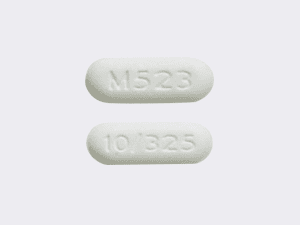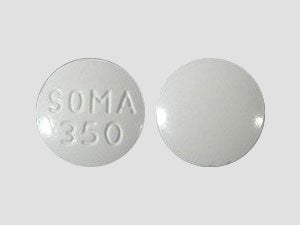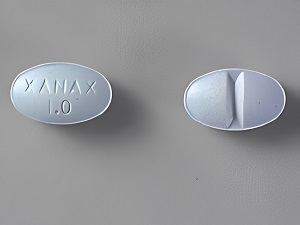Tramadol has a superior quality for pain relief treatment
Pain is a relentless adversary that affects millions worldwide, seeking solace in effective pain relief treatments is crucial for restoring well-being. Among the array of options, Tramadol tablets have emerged as a beacon of hope, offering a unique blend of efficacy and safety. In this captivating journey, we unravel the superior quality to buy tramadol online in reducing the strength of pain relief treatment.
The Power of Tramadol
Tramadol, a synthetic opioid analgesic, possesses a multifaceted mechanism that sets it apart in the realm of pain management. Its ability to bind to opioid receptors, modulate neurotransmitters, and inhibit pain signals makes it a formidable ally against various types of pain, from acute injuries to chronic conditions.
How does tramadol works ?
Factors that affect how does tramadol tablet works in the following ways:-
- Tramadol works by binding to opioid receptors in the brain and spinal cord, altering the perception and response to pain signals.
- It also enhances the activity of neurotransmitters like serotonin and norepinephrine, which play a role in pain modulation.
- By inhibiting the reuptake of these neurotransmitters, tramadol prolongs their effects, leading to pain relief and mood modulation.
- Tramadol’s dual mechanism, combining opioid and non-opioid properties, allows for comprehensive pain management, targeting nociceptive and neuropathic pain pathways.
- Its unique pharmacology contributes to a favorable safety profile compared to stronger opioids, with a reduced risk of respiratory depression and dependency.
- Tramadol’s effectiveness varies based on individual factors such as pain severity, medical history, and tolerance levels, highlighting the importance of personalized treatment approaches.
Factors affecting the Tramadol tablet
Several factors influence the effectiveness and safety of Tramadol tablets:-
- Dosage and Administration: Proper dosage and adherence to prescribed administration guidelines are crucial for optimal outcomes.
- Individual Response: Response to Tramadol can vary based on factors like age, medical history, and tolerance levels.
- Drug Interactions: Tramadol may interact with other medications, potentially altering its efficacy or increasing the risk of side effects.
- Medical Conditions: Certain medical conditions, such as liver or kidney disease, can impact Tramadol’s metabolism and clearance from the body.
- Tolerance and Dependency: Prolonged use of Tramadol can lead to tolerance, requiring higher doses for the same effect, and may result in dependency or withdrawal symptoms.
Strength of Tramadol tablet
Tramadol tablet comes in different sizes for pain relief treatment in the following ways :-
- Tramadol tablets are available in various strengths, typically ranging from 50mg to 200mg per tablet.
- The strength of Tramadol tablets is determined by the amount of active ingredient, tramadol hydrochloride, present in each tablet.
- Lower strengths, such as 50mg and 100mg, should often prescribe for mild to moderate pain relief, such as postoperative discomfort or musculoskeletal pain.
- Higher strengths, such as 150mg and 200mg, are usually reserved for more severe or chronic pain conditions, such as neuropathic pain or cancer-related pain.
- The strength of Tramadol tablets influences the dosage regimen prescribed by doctors, with higher strengths typically requiring less frequent dosing.
- It’s essential for patients to adhere to the prescribe strength and dosing schedule to achieve optimal pain relief while minimizing the risk of side effects or complications.
- Healthcare providers carefully consider the patient’s pain severity, medical history, and response to previous treatments when determining the appropriate strength of Tramadol tablets to prescribe.
Do I Need to Take tramadol tablet ?
Here we consider to buy tramadol online in the following ways:-
- Consider taking Tramadol tablets if you experience moderate to severe pain that affects your daily life and functionality.
- Tramadol is commonly prescribed for various types of pain, including musculoskeletal pain, neuropathic pain, postoperative pain, and cancer-related pain.
- Consult a healthcare provider to determine if Tramadol is suitable for your specific pain condition, medical history, and treatment goals.
- Tramadol may be recommended if non-opioid analgesics like NSAIDs or acetaminophen are ineffective in providing adequate pain relief.
- Discuss potential benefits, risks, and alternatives with your healthcare provider before starting Tramadol treatment.
- Follow prescribed dosage and usage guidelines meticulously to optimize pain relief and minimize risks of side effects or dependency.
- If you have concerns about taking Tramadol, seek clarification and guidance from your healthcare provider to make informed decisions about pain management.
Efficacy in Pain Reduction
- Versatility Across Pain Spectrum: Tramadol’s versatility shines as it tackles a spectrum of pain, including musculoskeletal discomfort, neuropathic agony, post-surgical soreness, and cancer-related pain. Its broad applicability ensures no pain is too daunting.
- Potent Relief with Lesser Risks: Tramadol’s potency in providing robust pain relief is balanced with a lower risk profile compared to stronger opioids. This makes it an ideal choice for managing moderate to severe pain without compromising safety.
- Extended-Release Formulations: The availability of extended-release formulations extends Tramadol’s efficacy, providing sustained pain relief and reducing the need for frequent dosing, thereby enhancing patient compliance.
- Complementary Approach: Tramadol’s dual mechanism, combining opioid and non-opioid properties, allows for a holistic approach in pain management. It complements non-opioid analgesics, offering synergistic benefits and minimizing reliance on higher opioid doses.
Tramadol vs. Other Pain Relief
- Non-Opioid Analgesics: While non-opioid analgesics like NSAIDs and acetaminophen have their merits, they may fall short in addressing severe or neuropathic pain. Tramadol’s opioid component fills this gap, providing comprehensive relief.
- Stronger Opioids: Tramadol’s superior quality lies in its potency without the heightened risks associated with stronger opioids like morphine or oxycodone. It strikes a delicate balance, offering substantial pain relief with a reduced likelihood of respiratory depression or dependency.
- Neuropathic Pain Relief: Tramadol’s efficacy in neuropathic pain, often challenging to treat, further underscores its superior quality. Its dual action on nociceptive and neuropathic pain pathways makes it a standout choice.
Safety and Patient Experience
- Reduced Side Effects: Tramadol’s unique pharmacology translates into a favorable side effect profile, minimizing common opioid-related issues like respiratory depression and gastrointestinal disturbances.
- Improved Functioning: By alleviating pain effectively, Tramadol enhances patients’ functional abilities, promoting mobility, productivity, and overall quality of life.
- Patient Satisfaction: The balance of efficacy, safety, and tolerability contributes to higher patient satisfaction, fostering a positive treatment experience and adherence to therapy.
Navigating Safety and Responsible Use
- Individualized Approach: Tailoring Tramadol therapy to individual patient needs and factors ensures optimal pain management outcomes while mitigating risks.
- Monitoring and Education: Regular monitoring of patients using Tramadol, along with education on potential side effects and safe use practices, promotes a proactive and informed approach to treatment.
- Collaborative Care: Engaging in open communication and collaboration between healthcare providers and patients fosters a supportive environment for effective pain management and well-being.
What other Treatments are There for pain relief ?
Here are the benefits for treatment of pain relief in the following ways:-
- Nonsteroidal Anti-Inflammatory Drugs (NSAIDs): Medications like ibuprofen, naproxen, and aspirin reduce inflammation and relieve pain, commonly used for mild to moderate pain relief.
- Acetaminophen (Tylenol): Effective for mild to moderate pain relief and reducing fever, acetaminophen is often recommended as an alternative to NSAIDs for certain individuals.
- Physical Therapy: Exercises, stretches, and techniques prescribe by physical therapists help improve mobility, reduce pain, and promote healing for musculoskeletal conditions.
- Topical Treatments: Creams, gels, and patches containing medications like lidocaine, capsaicin, or NSAIDs can be applied directly to the skin to alleviate localized pain.
- Nerve Blocks: Injection of local anesthetics or steroids into specific nerves or nerve clusters blocks pain signals, providing targeted pain relief for certain conditions.
- Cognitive-Behavioral Therapy (CBT): Psychological techniques and coping strategies taught in CBT sessions help manage chronic pain by addressing emotional and cognitive aspects.
- Interventional Procedures: Invasive procedures like epidural injections, nerve ablation, or joint injections may consider for severe or chronic pain that doesn’t respond to conservative treatments.
Conclusion
Tramadol’s superior quality in reducing the strength of pain relief treatment is a testament to its multifacet efficacy, balanced risk profile, and patient-centered approach. As a stalwart in pain management, buy Tramadol online that continues to redefine standards, offering hope, comfort, and enhance quality of life to those battling pain. By embracing Tramadol’s unique benefits, navigating safety considerations, and fostering collaborative care, we pave the way for a brighter, pain-free tomorrow.











Leave a comment